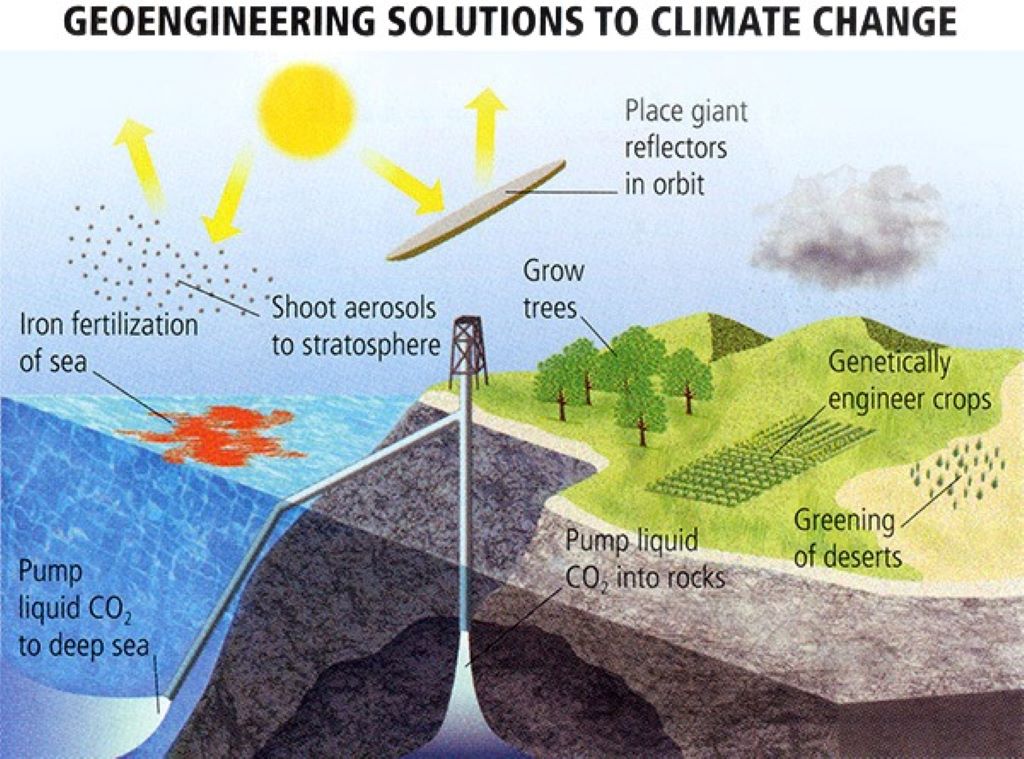
The Future of Climate Control: Is Solar Geoengineering the Answer?
Climate change threatens our planet’s future, therefore scientists are exploring revolutionary solutions. Solar geoengineering emerges as a controversial yet promising approach to climate control. This technology aims to reflect sunlight away from Earth, potentially cooling our warming planet. However, this method raises complex questions about effectiveness, safety, and ethics. Additionally, understanding solar geoengineering becomes crucial as governments invest millions in research. Therefore, exploring whether this technology represents the future of climate control requires careful examination of current evidence, potential benefits, and significant risks.
Understanding Solar Geoengineering and Climate Control Mechanisms
Solar geoengineering represents a form of climate intervention designed to reduce global temperatures. Scientists propose injecting reflective particles into Earth’s stratosphere to block incoming solar radiation. Furthermore, this approach mimics natural volcanic eruptions that historically cooled the planet temporarily.
The most popular method involves stratospheric aerosol injection using sulfur compounds. These particles reflect less than 1% of the sun’s radiation back to space. Consequently, this small change could significantly reduce Earth’s surface temperature. Moreover, researchers study this approach because natural examples exist from major volcanic eruptions.
Current Research and Development in Solar Radiation Management
Research into solar geoengineering has accelerated significantly in recent years. The National Academies of Sciences, Engineering, and Medicine recommended establishing a US research program with $100-200 million over five years. However, public funding on this scale has not yet materialized fully.
Currently, the US government has provided $13 million in total funding to the National Oceanic and Atmospheric Administration. Additionally, Harvard University recently shuttered its solar geoengineering research program in March 2024. This program would have included the world’s first outdoor stratospheric aerosol experiment. Nevertheless, private foundations continue supporting research through various academic institutions.
Potential Benefits and Life-Saving Applications of Climate Engineering
Solar geoengineering could offer significant benefits for global health and climate stability. According to recent research published in PNAS, 1°C of global-average cooling through solar geoengineering could reduce mortality by over 400,000 deaths annually by 2080. However, estimates range from preventing 1.2 million deaths to potentially causing 2.7 million additional deaths annually.
Furthermore, this technology could provide rapid climate relief while emission reduction efforts continue. The speed of deployment represents a major advantage over traditional mitigation strategies. Additionally, solar geoengineering could help protect vulnerable populations from extreme heat events. Therefore, these potential benefits drive continued research interest despite significant uncertainties.
Major Risks and Concerns Surrounding Atmospheric Intervention
Despite potential benefits, solar geoengineering poses serious risks and concerns. Many scientists worry about unintended consequences that could disrupt regional weather patterns. Additionally, termination problems could cause rapid warming if deployment suddenly stops. Moreover, governance challenges arise regarding who controls global climate interventions.
Furthermore, 500 scientists from around the world signed a call in 2022 for an International Non-Use Agreement on Solar Geoengineering. This agreement would ban public funding, outdoor experiments, patents, deployment, and international organizational support. However, research continues as climate concerns grow and traditional mitigation proves insufficient.
Economic Analysis and Financial Implications of Global Implementation
The economic implications of solar geoengineering remain complex and uncertain. Research suggests that reducing uncertainty about this technology by one-third by 2030 could be worth approximately $4.5 trillion globally. Most of this value comes from reduced climate damages rather than reduced mitigation costs.
However, implementation costs could vary dramatically depending on the chosen approach and scale. Furthermore, negative emissions technologies could cost as much as $500 trillion if emissions targets are significantly overshot. Therefore, solar geoengineering might offer a more cost-effective alternative for rapid climate intervention. Additionally, economic analysis must consider potential damages from unintended consequences.
Public Opinion and Ethical Considerations in Climate Technology
Public opinion on solar geoengineering remains divided and often misinformed. Recent surveys show that 20% of Americans believe the government currently puts chemicals into the atmosphere to counteract global warming. Additionally, nearly half of respondents remain unsure about ongoing solar geoengineering activities.
Ethical considerations include questions about consent, justice, and global governance. Furthermore, developing countries might bear disproportionate risks from deployment decisions made by wealthy nations. Moreover, moral hazard concerns suggest that solar geoengineering might reduce emission reduction efforts. Therefore, inclusive and ethical frameworks become essential for responsible research and potential deployment.

Government Policies and International Cooperation Frameworks
Government policies regarding solar geoengineering vary significantly across nations. The US government is developing early warning systems to detect unauthorized geoengineering activities. Additionally, various international organizations are establishing guidelines for responsible research conduct.
Furthermore, the World Economic Forum has proposed five principles to ensure inclusive and ethical geoengineering research. These principles aim to ensure all voices are heard and risks are properly evaluated. However, international cooperation remains challenging due to differing national interests and priorities. Therefore, developing comprehensive governance frameworks requires continued diplomatic efforts.
Future Prospects and Timeline for Climate Control Technologies
The future of solar geoengineering depends on several critical factors including research outcomes, public acceptance, and governance development. Currently, no large-scale outdoor experiments have been conducted, limiting our understanding of real-world effects. However, computer models and laboratory studies continue advancing our knowledge.
Furthermore, climate urgency might accelerate development timelines despite current controversies. Additionally, breakthrough technologies could emerge that address current limitations and concerns. Moreover, international cooperation frameworks might evolve to enable responsible deployment if research proves promising. Therefore, the next decade will likely prove crucial for determining solar geoengineering’s role in climate control.
Personal Perspective: Witnessing Climate Change Impacts Firsthand
As someone who has observed rising sea levels along Bangladesh’s coastline, I understand the urgency driving interest in solar geoengineering. Coastal communities here face regular flooding and saltwater intrusion affecting agriculture and freshwater supplies. Additionally, extreme heat events have become more frequent and severe, particularly affecting vulnerable populations.
However, my experience also teaches caution regarding technological solutions. Traditional climate adaptation strategies often prove more sustainable and beneficial for local communities. Furthermore, involving affected populations in decision-making processes remains essential for any global intervention. Therefore, solar geoengineering research must prioritize justice and community voices alongside scientific advancement.
Conclusion
Solar geoengineering represents both promising opportunity and significant risk for future climate control. Current research reveals potential life-saving benefits while highlighting serious concerns about unintended consequences. Additionally, economic analysis suggests substantial value in reducing uncertainty about these technologies. However, public opinion remains divided, and ethical considerations require careful attention.
Furthermore, government policies and international cooperation frameworks continue evolving to address governance challenges. Therefore, the future of climate control through solar geoengineering depends on responsible research, inclusive decision-making, and comprehensive risk assessment. Moreover, this technology should complement rather than replace emission reduction efforts. Ultimately, addressing climate change requires multiple approaches, and solar geoengineering might play an important role if deployed thoughtfully and ethically.
What are your thoughts on solar geoengineering as a climate solution? Share your perspective in the comments below and help spread awareness by sharing this article with others interested in climate technology.
Frequently Asked Questions
What exactly is solar geoengineering and how does it work?
Solar geoengineering involves reflecting sunlight away from Earth to reduce global temperatures. The most common approach uses stratospheric aerosol injection, where reflective particles are released into the upper atmosphere to block less than 1% of incoming solar radiation.
How much would solar geoengineering cost to implement globally?
Current estimates suggest research programs require $100-200 million over five years. However, full implementation costs remain uncertain and could vary dramatically depending on the chosen technology and deployment scale.
What are the main risks associated with solar geoengineering?
Major risks include disrupting regional weather patterns, potential termination problems causing rapid warming, governance challenges, and unknown long-term environmental consequences that could affect ecosystems and human health.
Is solar geoengineering currently being used anywhere in the world?
No large-scale solar geoengineering programs are currently operational. Research remains mostly theoretical and computer-based, with Harvard’s planned outdoor experiment being cancelled in March 2024.
Could solar geoengineering replace the need to reduce carbon emissions?
Solar geoengineering cannot replace emission reductions but might complement them. This technology addresses symptoms rather than causes of climate change, and stopping deployment could cause rapid warming if greenhouse gas concentrations remain high.
Read More:
Digital Transformation: Cloud Managed Services for Businesses


Average Rating